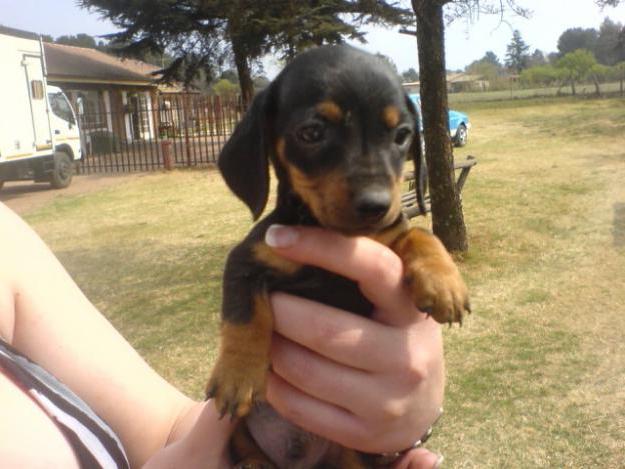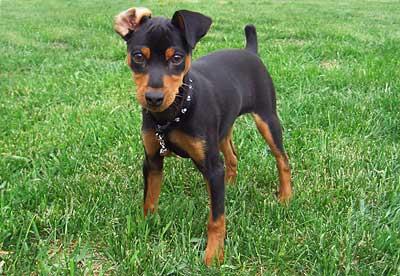A mini-Doberman or dwarf pincher appeared as a more or less thoroughbred dog in the middle of the 15th century. At first he was bred in German farms, where he was valued for good hearing, fearlessness, small stature and tirelessness. The dog did not require a lot of food, sensitively guarded the house, exterminated rats in the barn better than a cat, and on occasion the owner could hunt small game with it - rabbits or ducks.
It is believed that the ancestors of miniature Dobermans were Scandinavian dogs and ordinary smooth-haired Pinschers, bred in the vicinity of Württemberg. Be that as it may, but in the 19th century, suddenly this breed became very popular at first in Germany, and then beyond. Breeding work began on breeding pinschers as small as possible. The Zwergpinscher breed standard was approved in 1880. In the wake of fashion, he has become basically an urban companion dog.
In Russia, this breed is known as the mini-Doberman. However, the connection with the latter in the dwarf pincher is very doubtful. Herr Doberman, wanting to bring out the ideal bodyguard dog at the end of the 19th century, took for his new breed pedigree blood of large German Pinschers. But this is where all kinship ends. Thus, both the miniature handsome and the ordinary Doberman have one distant ancestor - this is a smooth-haired pinscher.

What kind of breed is this - mini-Doberman? Photos show us cute little short-haired dogs with ears standing or hanging on the cartilage forward, smart eyes and a cropped tail. These are animals of the “square format” with strong legs, muscular, but at the same time with a neck delicately curved, like a Doberman’s. The coat should fit snugly to the body. Black “varnished” miniature pinschers with shiny wool and fiery red tan are very popular. In general, the MKF standard for this breed (it is listed there under No. 185) only two suits are allowed: red (all shades - from light to chocolate) and black and tan. Dogs with roe deer color (with speckles) are bred in Germany in a separate group - re-pinchers. But the most characteristic feature that serves as the hallmark of this race is a special allure - the "ballet lynx". A dog walks, throwing his forepaws high, like a circus horse (or rather, a pony).

What is the nature of these babies? Mini-Doberman - loving pinscher. One hundred years of the breed’s stay in city apartments somewhat cooled the hunting instinct of this “rat storm”. Now dogs get along well with cats and other pets. However, some of the valuable qualities of the former guard of German farmsteads still remained. Phenomenal hearing, unprecedented courage and an extraordinary mind distinguish the miniature pinscher from other breeds. With a growth of 30 cm and a mass of 5 kilograms, the mini-Doberman is not afraid to resist a flock of large dogs in order to protect the owner. And he will hear his steps when he is still on the far approaches to the house.
It’s easy to take care of the miniature pinscher. It practically does not fade, is very clean, easily learns teams. Mini-Doberman has good health, does not suffer from "thoroughbred" diseases, lives long and retains energy and playfulness until old age. The only thing that needs to be taken into account by the owner of the dwarf pinscher is that the short coat of his pet does not protect him from the cold, so in winter you need extra clothes. Also, dogs of this breed are big lovers of food. Do not overfeed them!